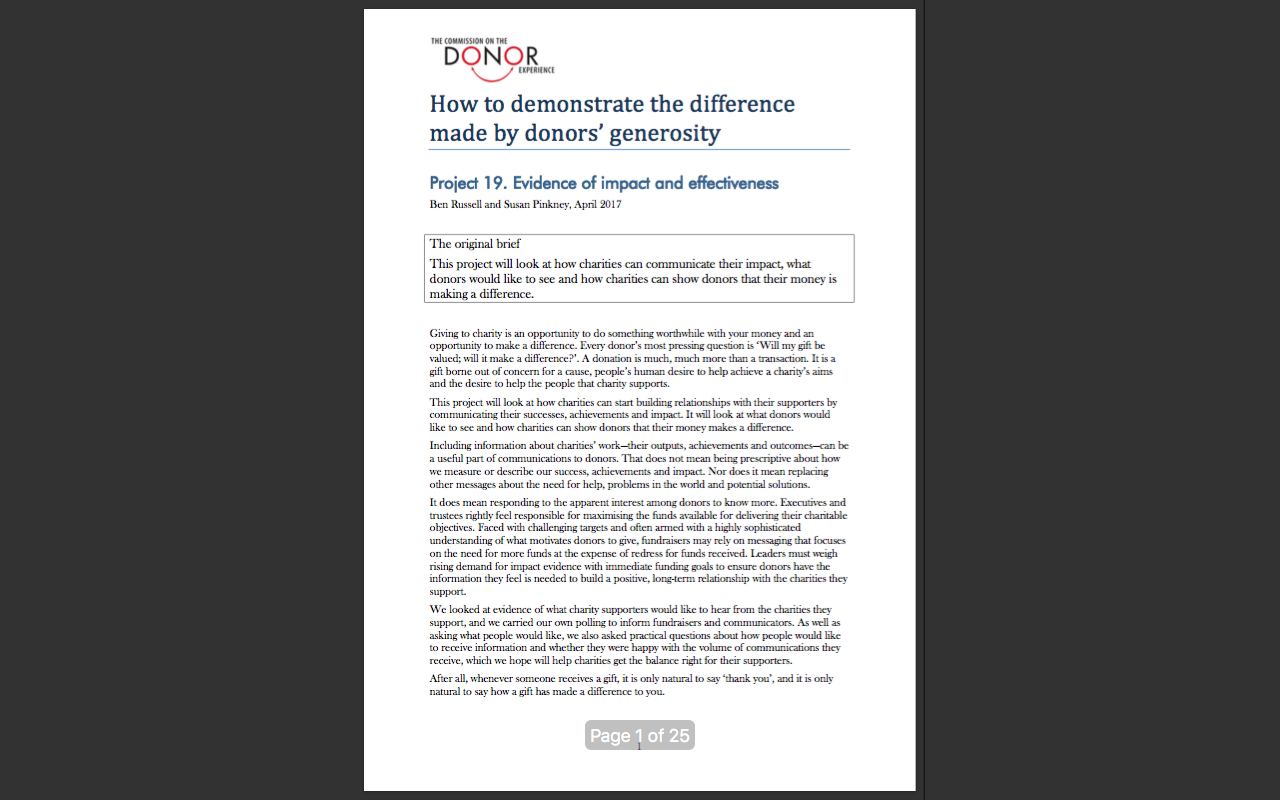CDE project 19 section 4: test as you go
- Written by
- The Commission on the Donor Experience
- Added
- April 28, 2017
Test as you go
Surveys give us an idea of claimed behaviour while actual behaviour can be different in practice. Just as it is not completely clear from the academic experiments what the effect is of giving information about charity effectiveness ranking, so it is not clear that donors’ stated preferences in surveys reflects their behaviours in practice.
The principle of A/B testing is well understood in marketing and should be applied to various approaches to inform what works best for individual charity audiences: human stories, statistics about activity, anecdotal reports about outcomes and so forth.
The Behavioural Insights Unit has produced very useful guidance on setting up trials—Test, Learn, Adapt [1]- that shows how trials can operate. This research on behavioural insights and charitable giving shows very clearly how simple changes in language can make profound differences to donation and sign up rates.
One of the key messages from the Behavioural Insights Unit’s research is that very small changes in language can have a big effect on people’s responses. A donation is much more than a transaction—and the relationship between donor and charity is much more than that between gift and recipient. It is an opportunity for a donor to do something great and achieve something—in effect, to make something better.
You can see some of this in the Behavioural Insights Unit’s work on charitable giving. Small changes in language, such as inviting people to think about favourite causes rather than simply asking for a donation, made big differences to the numbers giving. Will writers in one trial found people were three times as likely to write a charity legacy into their will if they were asked about the causes they support, than if they were simply asked if they would like to leave a legacy. See CDE project 1 for guidance on the complex subject of the use and misuse of language.
We did not have the opportunity to test different messages about achievements and impact in this way. The Behavioural Insights Unit’s research does suggest that small changes in the way we talk about the success of a charity, the way it affects its chosen cause and the impact it makes could have big effects. So it is important to keep in touch with donors, monitor responses to different messages and be prepared to adapt and learn.
[1] https://www.gov.uk/government/...


















